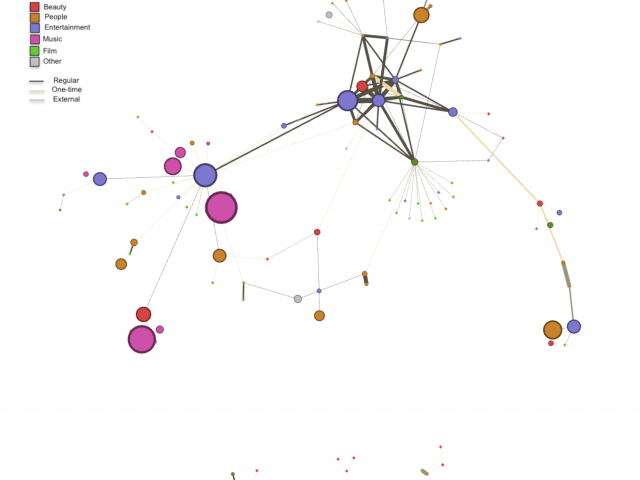
Online videos such as those streamed through YouTube are largely produced by individual users rather than traditional mass media, partly due to the incentive structure of the platforms. As part of the strategy to increase the audience, many content creators collaborate with other creators to attract subscribers and diversify their content. This behavior can be conceptualized as “coopetition” as they cooperate for their channels’ success while competing with one another for the limited pool of audience. In this project, we analyze data about beauty and gaming YouTubers to understand their collaboration types and network structures. The network analysis suggests that (1) the coopetition networks of YouTubers may show a scale-freeness in their topological structure and (2) beauty YouTubers cooperate with non-beauty channels more compared to gaming YouTubers, implying that YouTubers’ cooperation networks may present a different level of heterogeneity depending on topics. The results inform the mechanisms of online video producers’ cooperation and competition processes from an ecological perspective.
* This paper is an outcome of the Aspiring Scientists Summer Internship Program (ASSIP) at George Mason University, which aims to promote STEM research opportunities for high school and undergraduate students. We thank the ASSIP and Dr. Andrea Cobb for their support for this study.